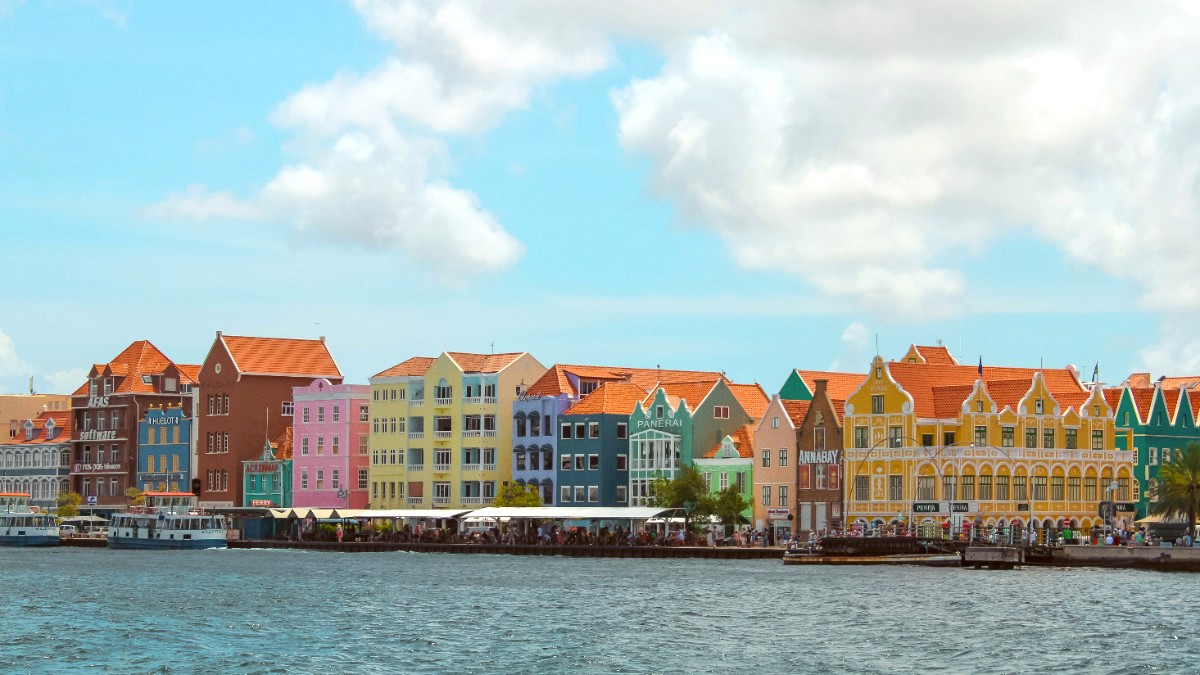
Aruba Bonaire And Curacao
Must-visit sites with historical and cultural context.
Washington Slagbaai National Park, Salt Pans (Salt Pyramids), Slave Huts, Lighthouse at Willemstoren, Kralendijk Waterfront.
The Slave Huts serve as a powerful and somber memorial to the enslaved people who contributed to Bonaire's salt industry.
A hill presenting panoramic views of Kralendijk, Klein Bonaire, and the southern part of the island, notably stunning at sunset.
A popular dive and snorkel site with a scenic staircase leading down to the water, presenting picturesque views.
Can be seen at Goto Lake, Pekelmeer (the southern salt ponds), and within Washington Slagbaai National Park. Bonaire holds one of the largest flamingo populations in the Caribbean.
Bonaire is a large population of wild donkeys. The Donkey Sanctuary Bonaire tends to rescued donkeys and presents a chance to interact with them.
Many small, uncrowded beaches dot the coastline, with clear, inviting water. Te Amo Beach and Sorobon Beach are distinguished.
Beyond the popular spots, Bonaire holds lesser-known treasures awaiting discovery.
A remote, rustic bay known for its extensive mangroves and an unique 'conch graveyard'. Popular with locals for fishing and snorkeling, it presents a peaceful, unspoiled atmosphere.
A small cave with a blowhole, calling for careful navigation to reach. It presents a taste of adventure and an unique geological formation.
A pristine, lesser-known snorkeling spot within Washington Slagbaai National Park.
Seek small local snack trucks (foodies) for authentic Bonairean flavors. Explore quiet local beaches away from the main tourist areas for a peaceful experience.
While Bonaire's core attractions remain its main draw, a growing focus on eco-tourism and cultural experiences in areas like Rincon presents immersion for visitors.
Panoramic views from Seru Largu, especially at sunset. Striking white Salt Pyramids. Wild flamingos at Goto Lake or Pekelmeer. Colorful Dutch colonial architecture of Kralendijk. Abundant underwater photography chances.
A vast nature reserve covering the northern part of the island, holding diverse landscapes and significant historical sites.
Vast, gleaming white mounds of salt, an iconic sight representing centuries of active salt production.
Small, stone huts built in the 19th century, a powerful historical reminder of Bonaire's past.
Bonaire’s history is visible through its well-preserved sites.
Explore Bonaire's breathtaking landscapes and historical markers through these images.
From the rugged beauty of its national park to the solemn reminders of its past, Bonaire's attractions invite discovery.
A scenic view within the sprawling Washington Slagbaai National Park, demonstrating Bonaire's natural and untamed beauty.
The historical slave huts lining the coast serve as a somber and powerful monument to Bonaire's past.
The colorful capital of Bonaire, Kralendijk, with its charming Dutch colonial architecture along the waterfront.
A diverse terrestrial park with varied landscapes and wildlife. Access requires a STINAPA Nature Fee. Book tours with GetYourGuide.
View ImageHistoric stone huts serving as a memorial to the enslaved people who worked in the salt pans.
View ImageVast, gleaming white mounds of salt, a centuries-old active production site and a flamingo habitat.
A hill presenting panoramic views of Kralendijk and Klein Bonaire, especially striking at sunset.
A large saltwater lake and a prime flamingo breeding ground, excellent for bird watching.
Bonaire is a sanctuary for nature lovers, specifically those interested in marine life and bird watching.
Bonaire's commitment to protecting its environment is evident in its park systems.
For optimal viewing of flamingos, visit Goto Lake or Pekelmeer in the early morning or late afternoon.
Remember to bring binoculars for better bird-watching experiences.
Explore more unique sites and experiences Bonaire holds.
Explore Bonairean heritage at cultural institutions.
Connect with Bonaire's past through its well-preserved historical sites.
Discover breathtaking vistas across the island.
These spots provide excellent photo opportunities.
Relax and play on Bonaire's inviting shores and waters.
Many small, uncrowded beaches dot the coastline.
Encounter Bonaire's diverse animal residents.
Iguanas, lizards, and various birds are common sights.
Purchase tickets for Bonaire's attractions and tours through GetYourGuide.
Book guided tours for Washington Slagbaai National Park or other sites for insights.
Plan your sightseeing adventures ahead of time for a seamless experience on the island.